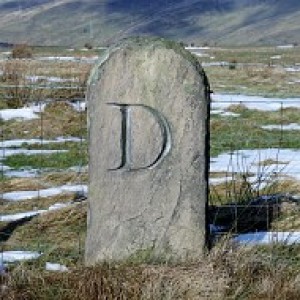Peniel Heugh and Waterloo Monument
The second of five HuMPs today in warm & occasionally sunny conditions.
Peniel Heugh, which means "hill-hill-slope" in a combination of Cumbric (Old Welsh), Anglo-Saxon and Old Scandinavian, is the site of a long dead volcanic extrusion. A wall of comprised of boulders on its summit once enclosed a fortified settlement of the Early Historic (Dark Age) period. This settlement was located on this site to guard the Roman road, Dere Street in the centuries after the Romans had abandoned Britain and Anglian invaders had penetrated this area from the south. The 48 metre (150 foot)tower on the summit of the hil was built between 1817 and 1824, to commemorate the Battle of Waterloo (1815).
This 46m (150 feet) high monument was constructed between 1817 and 1824 to commemorate the Battle of Waterloo (1815). It stands on the site of a fortified settlement and is one of the best known man-made features in the central Borders. The monument was started in 1815, but collapsed in 1816 during the course of construction, and an estate worker brought the news to his feudal lord, "yon muckle stane has fallen". The timber cap-house was added in 1867. (Source: Borders and Berwick, An Architectural Guide by Charles Alexander Strang).
The tower and cap-house has been restored. Access is possible by key from Lothian Estates office.

Comments
Sign in or get an account to comment.


